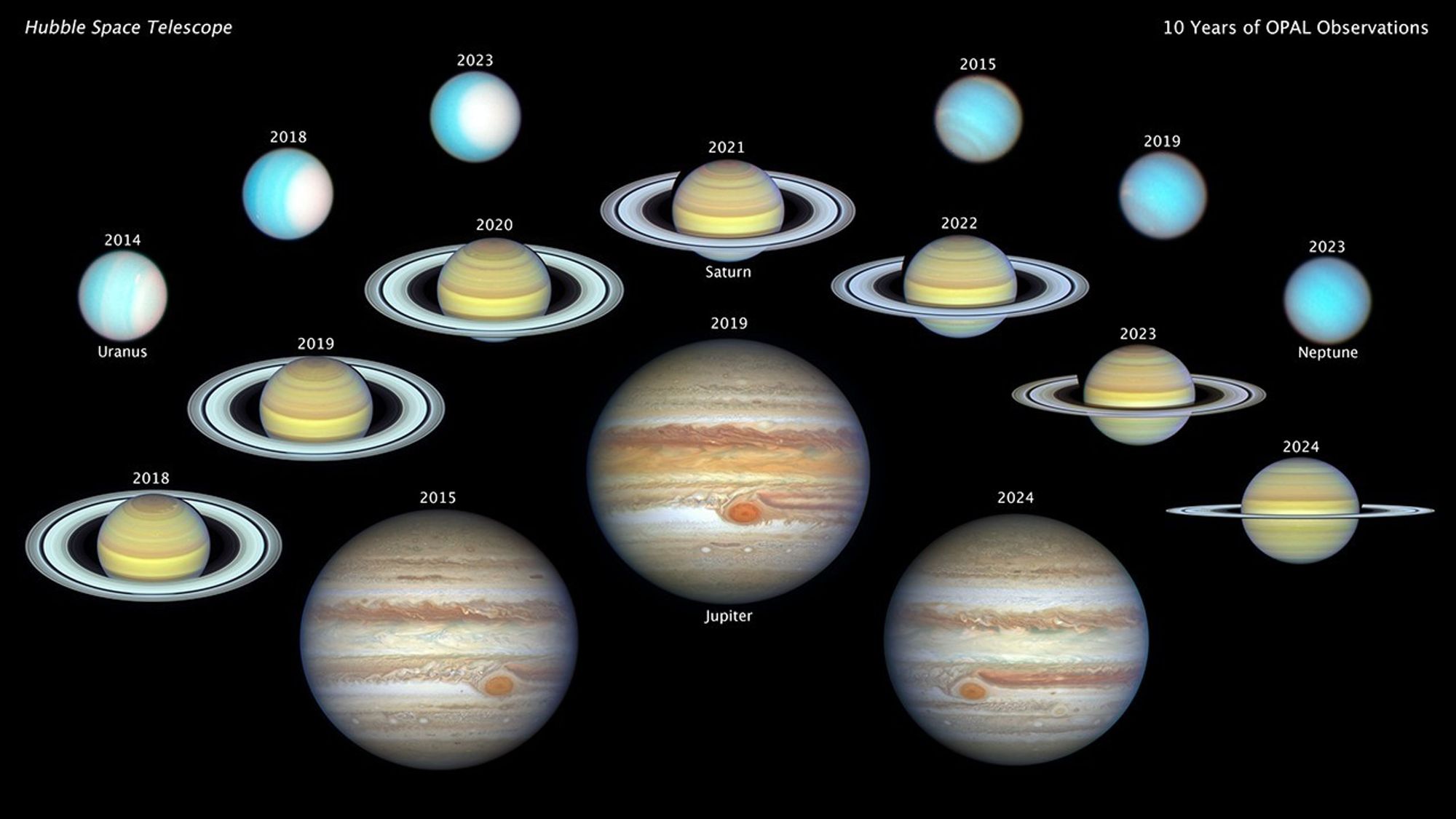NASA's Hubble Space Telescope Captures Detailed Images of Jupiter's Atmosphere

Baltimore, MD - In a remarkable display of astronomical observation, NASA's Hubble Space Telescope has captured sharp images of clouds, winds, storms, vortices, and the behavior of Jupiter's Great Red Spot (GRS). The telescope, launched in 1990, continues to provide unparalleled insights into our solar system's largest planet.
Hubble's observations indicate that the GRS is shrinking in size while its winds are accelerating. Recent data from the Observations of Polar Atmospheres Lab (OPAL) reveals an increase in mysterious dark ovals appearing in Jupiter's polar hoods at ultraviolet wavelengths. These dark ovals can only be seen using Hubble's advanced instruments, as they do not emit visible light.
In contrast to Earth, where the tilt of its axis contributes significantly to seasonal changes, Jupiter's tilt is relatively minor at just three degrees. However, Jupiter's distance from the Sun varies by 5% due to its 12-year-long orbit around the star. As a result, seasonal effects on the planet's atmosphere are closely monitored by OPAL.
One advantage of Hubble's continuous observation lies in its ability to capture images that ground-based observatories cannot. Due to Jupiter's slow rotation period and the time it takes for an observer in Earth to view the planet, ground-based observations would typically result in 20-hour gaps in observation. However, Hubble remains operational throughout these periods, providing scientists with uninterrupted data.
The NASA Hubble Space Telescope's remarkable capabilities continue to shed light on the complex features of Jupiter's atmosphere, expanding our understanding of this enigmatic gas giant and its place within our solar system.
